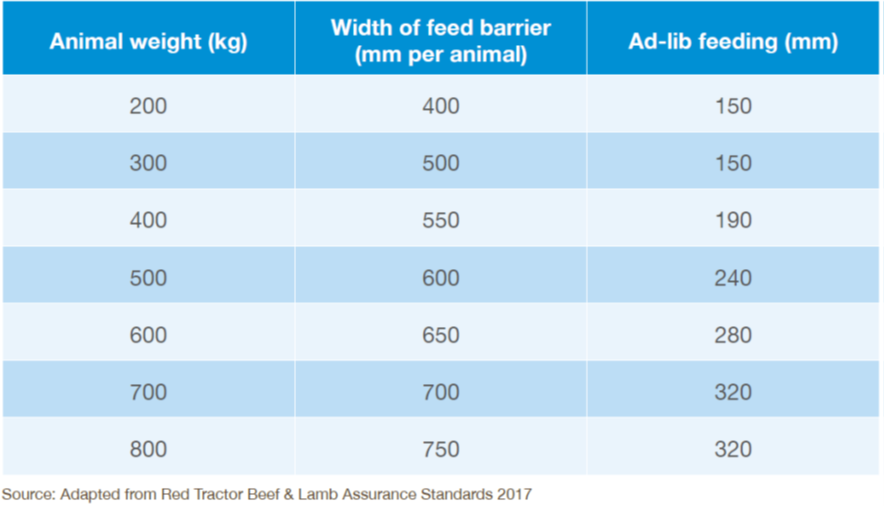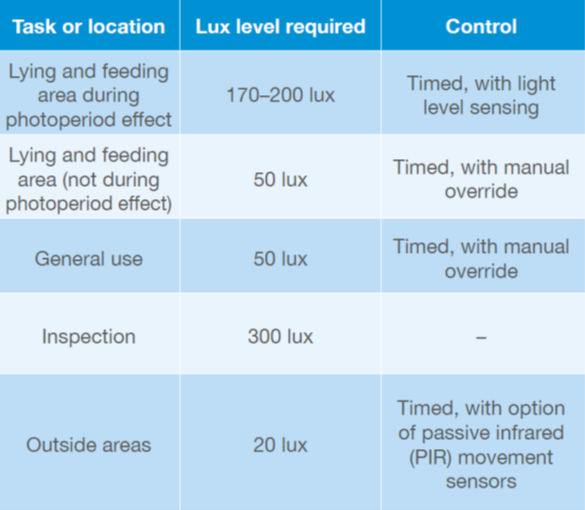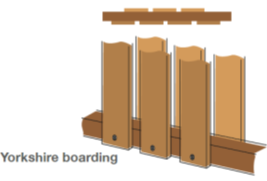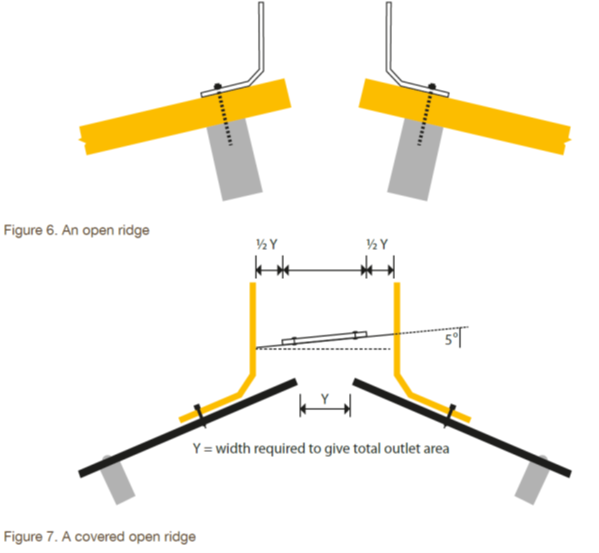Is Your Livestock Housing Fit for Purpose?
With most farms now having their cattle housed for the winter it is important to ensure that your sheds are fit for purpose and are not limiting production. There are a number of key areas that need to be considered all of which will have a positive or negative impact on production, be this litres of milk or daily live weight gain.
Feed Space
It is essential to have sufficient feed space so that all cattle can feed. Lack of feed space can lead to heifers and/or timid cows not being able to eat when they want to and being bullied out of the feed area. This clearly will have an impact on dry matter intakes which affect production.
 Lack of feed space can also lead to the more dominant animals eating first and consuming all the tasty parts of the diet, e.g., blends and straights. This will result in the dominant cows being over fed and the timid cattle being under fed. A classic sign of this is a wide variation in the consistency of the muck.
Lack of feed space can also lead to the more dominant animals eating first and consuming all the tasty parts of the diet, e.g., blends and straights. This will result in the dominant cows being over fed and the timid cattle being under fed. A classic sign of this is a wide variation in the consistency of the muck.
The table right is a guide to the required feed areas for cattle.
Lighting
Animals need certain levels of light for certain periods of time to encourage them to eat and rest. Both have a direct impact on production. Dairy cows need to lie and rest/cud for 11 hours per day so providing the right lighting is essential to help achieve this.
The table left shows the recommended lighting levels for various areas around the farmyard.
Source: AHDB - Better Housing Design.
Ventilation
This is an area often overlooked. Historically older buildings were erected with cranked ridge tiles to allow some air to escape and space boarding along the side.
This type of ventilation is not sufficient for modern farming which requires greater levels of air movement.
 There are some simple fixes that can be used to help improve ventilation that are cheap when compared with investment in new buildings.
There are some simple fixes that can be used to help improve ventilation that are cheap when compared with investment in new buildings.
1. Convert the space boarding to Yorkshire boarding. This increases the area open to allow air in, whilst preventing rain passing in. The design helps to draw air into the building as well.
2. Remove cranked ridge tiles and either leave the ridge open if there is nothing below that needs to remain dry, e.g., feed or beds. If rain protection is required fit an open ridge or covered ridge (as image left).
Flooring
Cattle need to be sure of their footing and will avoid areas that they are unsure of. This can lead to reduced activity which in a dairy herd could be fewer signs of bulling. Over time concrete wears out and it is essential to keep it well grooved to ensure cattle have the confidence to move around.
Space
The final point is space, both for lying and for moving around. The required space will depend on the size and type of livestock and the type of bed, i.e., straw bed or cubicles. As mentioned earlier it is essential to have sufficient space for all stock to lie down at the same time. Cows will generally only lie down for around 60 minutes before having to get up due to pressure on joints, etc. If they need to lie for 11 hours, then they will get up and lie down around ten times in 24 hours. The recommendation with cubicles is to have 5% more than the group size available.
When was the last time you stood back and looked at your housing from the animal’s perspective to see how it can be improved to increase animal comfort and thus performance? To discuss this further, contact Phil on 07798 673665 or e-mail: pcooper@fcgagric.com

Recent Articles
- Do You Know the Benefits of a Health and Heat Detection System?
- Have you Ordered Your Silage Inoculant?
- Growing More Grass With Less Nitrogen, Where Do I start?
- A Real Recognition of The Importance of Food Security or Simply A Reconciling of DEFRA Budgets?
- Silage Sheet Prices Available!
- Are Your Cows at Risk of Grass Staggers?
- Feed Late Afternoon and Calve in Daylight Hours!
- Q Fever
- Aerating Your Soil Without A Machine? – Gerard Finnan
- Why Are You Not doing a Soil Management Plan?

